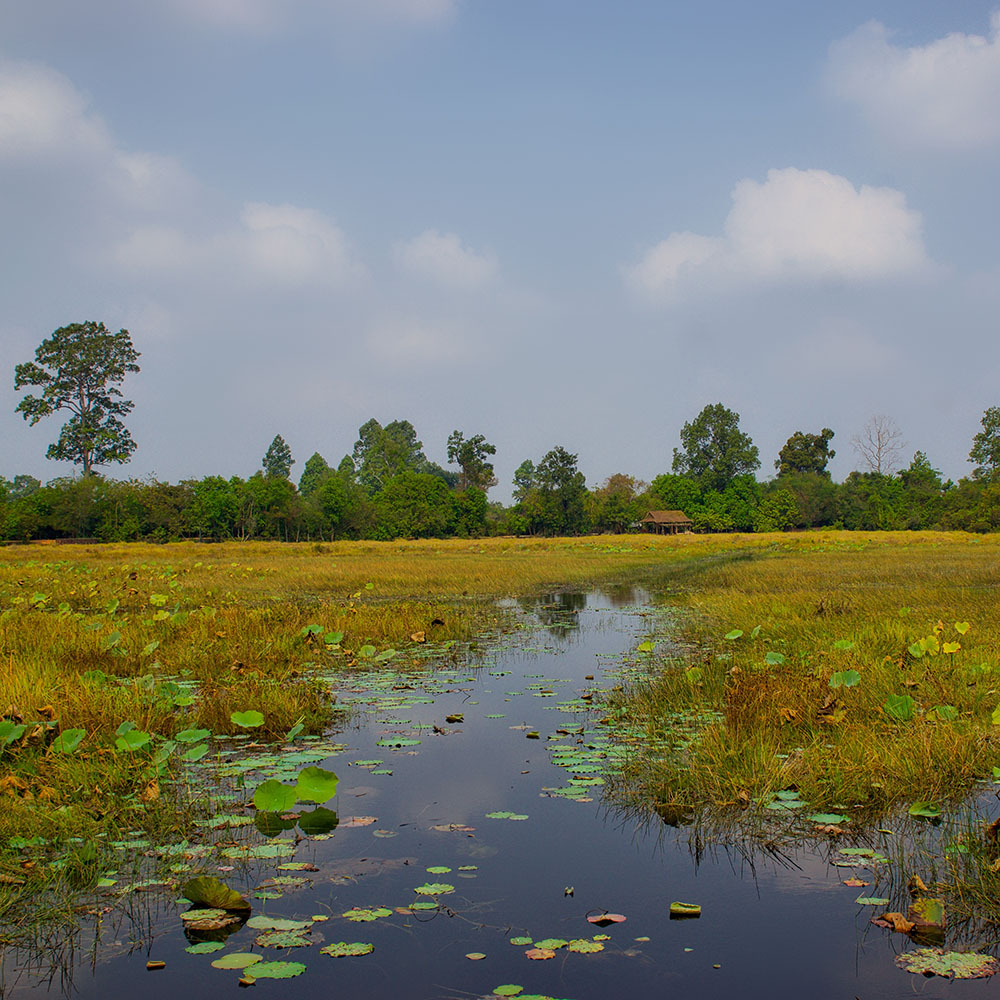Cambodia interpretation of safeguard B
The rights of access to information, accountability, justice, gender equality, land tenure and fair distribution of benefits will be clarified, respected and promoted in the scope of the application of the National REDD+ strategy.
Core elements of Cambodia’s clarification of safeguard B:
- Right to access information is promoted in the context of the implementation of the REDD+ strategy
- Accountability is guaranteed in the context of the implementation of the REDD+ strategy
- Right to access justice is recognized and protected in the context of the implementation of the REDD+ strategy
- User rights over forest land (particularly of IP and women) are recognized and protected in the context of the implementation of the REDD+ strategy
- Gender equality is promoted and ensured in the context of the implementation of the REDD+ strategy
- Fair distribution of benefits is recognized and promoted in the context of the implementation of the REDD+ strategy
Governance arrangements for safeguard B
The right to access information stems mostly from a right to participation across different pieces of legislation.
Cambodia provides clear measures to deal with corruption in general, which are directly applicable to the forest sector. In addition, most of the legislation in the sector contains additional references and specific references to offences relating to corruption in their field.
Law on Audit (2000) establishes the National Audit Authority (NAA) as an independent agency which is responsible for conducting audits of transactions, accounts, systems, controls, operation and programs of government institutions. The law requires the NAA to certify the annual budgets of the government and report to the National Assembly and the Senate. If any serious irregularities are found by the Auditor-General they must be reported.
The National REDD+ Strategy outlines the creation of a monitoring and evaluation framework which is intended to create an enabling environment of accountability and learning. These instruments will contribute to effective and timely implementation, strengthen accountability and transparency, and promote participatory and open learning. The framework will also have indicators that allow for sustained focus to track delivery of results and benefits to vulnerable communities, indigenous peoples, and women. Collection of gender disaggregated data would be prioritized.
Additionally, the National REDD+ Strategy states that as and when established, the REDD+ fund would adhere to internationally accepted principles of transparency, accountability, effectiveness, equity and efficiency. In addition modalities and requirements of development partners who provide up front non- results based finance would be negotiated on a case by case basis.
The Land Law (2001), Forestry Law (2002), Fisheries Law (2006), and Protected Area Law (2008) all recognize the rights to traditional access and customary user rights[1] by local communities and indigenous peoples.
The National REDD+ Strategy includes among its objectives the improved management and monitoring of forest resurces and forest land use, which includes the strengthening of the management of forest conservation areas, such as protected areas and flooded and mangrove conservation areas, and the promotion of forest land tenure security through forest land classification, zoning, demarcation, and registration.
The Cambodian Constitution clearly prohibits any discrimination against women and establishes that they have the same rights, freedoms, and obligations of all Khmer citizens. The Constitution states its recognition for and respect of the UN Charter on the Universal Declaration of Human Rights in Article 31, and Cambodia is a signatory of the Convention on the Elimination of all Forms of Discrimination Against Women (CEDAW) (1992).
Certain other laws, sub-decrees, and programs recognize the unique role that women have and within the law there are stipulations regarding actively encouraging women to participate.
The National REDD+ Strategy supports and complements the implementation of Cambodia’s broader development plans in particular, the Gender and Climate Change Action Plan 2014-2018. Additionally, a gender group was established by the REDD Task Force (RTF) to build awareness on gender issues among members of the RTF, consultation group and technical teams and to review and provide gender-specific inputs to the NRS. The four members of the gender group are affiliated with FA and FiA of MAFF, MoE, and the Ministry of Women’s Affairs (MoWA).
[1]Land Law, Article 25; Forestry Law (2002), Article 40; Fisheries Law (2006), Article
Information on implementation of safeguard B
B.1. Description of information sharing/dissemination activities undertaken, including requests for access to information made by the public disaggregated by gender
B.2. Description of REDD+ related grievances received, process followed to adjudicate and outcomes, including records of any REDD+ related denunciation of public officials for corruption, any corruption related investigations and/or prosecutions by the mandated agencies as well as their outcomes
B.3. Description of how REDD+ finance (readiness, implementation and results) has been spent, percentage of allocation by gender
B.4. Measures taken for equitable sharing of benefits, gender equity and dealing with social discrepancies
B.5. Description of how existing land use rights have been recognized and protected during the implementation of REDD+, in particular land rights of women and IP.
B.6. If applicable, description of any resettlement process (including procedures followed and compensation provided) for each REDD+ intervention area.
B.7. Number of requests for information received and number dealt with (percentage rejected and granted)
B.8. Number of women involved in the implementation of REDD+ activities
B.9. Number of grievances received against implementing authorities
B.10. Number of grievances addressed and resolved by implementing authorities,
B.11. Number of individual or communal / customary rights holders over forest land, broken down by gender and by ethnicity, in the area before and after REDD+ PAMs
B.12. Number families or communities resettlements (if and as applicable)
B.13. Amount of compensation awarded (if and as applicable) and breakdown of compensation by gender and ethnicity.

